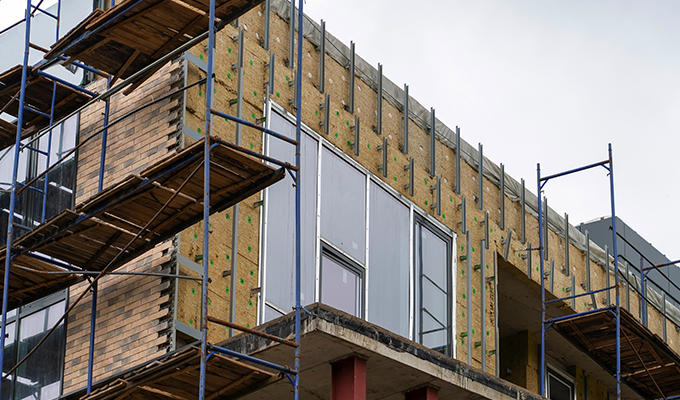Thanks to climate change, summers are getting hotter and the need for energy-efficient buildings is growing exponentially. Add the need and desire for sustainable building practices, and you have the makings of a shift in building trends. What do insulation building trends look like in 2022 and beyond?
Retrofit and Adaptive Reuse
We’re breaking ground on new buildings every day, but currently, nearly 90% of existing commercial buildings are more than 15 years old. Almost half of all existing commercial structures are more than 50 years old, many of which were constructed before building codes required insulation.
As environmental conditions change, these older buildings are the perfect candidates for retrofits or adaptive reuse projects. Other benefits of these products include reducing noise pollution in densely populated areas and improving fire protection. These projects will require that building owners take steps to bring the current insulation up to code.
The Push for Sustainability
The construction industry is one of the most wasteful in the world. In the United States in 2015, the industry sent more than 550 million tons of waste to landfills. Sustainability, both in existing structures and in new construction, is a hot-button issue in 2022. There is a looming threat—climate change—and a fast-approaching deadline to reduce the world’s global CO2 emissions enough to prevent a climate crisis from threatening future life on the planet. Traditional fiberglass or expanding foam insulation is not eco-friendly or recyclable.
The sustainable insulation market is expected to grow through 2028 in the commercial and residential sectors. Options such as recycled denim, rigid cork, mycelium, wool, and hemp can replace traditional fiberglass insulation, often with better results. Opting for more sustainable choices is an option right now, but it may not be for much longer. It is the perfect opportunity for business owners to make changes to bring in a more eco-focused and eco-friendly clientele.
The push for sustainability is also the perfect opportunity for insulation companies to discover what it takes to assist building owners in achieving LEED certification during their building retrofit or adaptive reuse plans. According to the Department of Energy, an R-value of 30 is essential for building in hot climates, with an R-value of 38 for moderate temperatures and 49 for cold climates.
Insulation is only one part of achieving LEED certification. It can be more challenging to retrofit older buildings that aren’t built with energy efficiency in mind. Still, it is a fantastic opportunity for insulation companies looking to follow the fastest-growing insulation trends.
Tracking the Economy
It has been a rough couple of years for many industries, with everything from a global pandemic to supply shortages making it difficult to meet deadlines and finish projects. Thankfully, the economy is bouncing back and business owners across numerous industries can look forward to a period of growth. The United States’ GDP is forecast to increase by 2.3%, faster than the period between 2012 and 2017.
This sounds like a positive change, but things might not continue to climb in the way they have been for the last few years. Rising costs and growing instability in the market could be leading the United States into the first recession since 2008. This recession isn’t likely to impact the marketplace until 2023.
Looking Toward the Future
It’s challenging to predict the future for the insulation industry, especially with so many variables at play. The push toward sustainable growth and green insulation will be the primary driving force for insulation companies for the foreseeable future. Companies that haven’t already started to explore green or sustainable options have the perfect opportunity to make that change before it becomes a necessity rather than a choice.
About the Author:
Jane Marsh is an environmental and green technology writer who covers topics in sustainable construction and green building materials. She also works as the editor-in-chief of Environment.co.
Modern Contractor Solutions, May 2022
Did you enjoy this article?
Subscribe to the FREE Digital Edition of Modern Contractor Solutions magazine.



